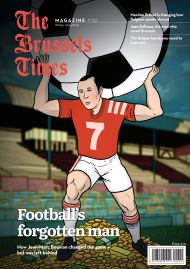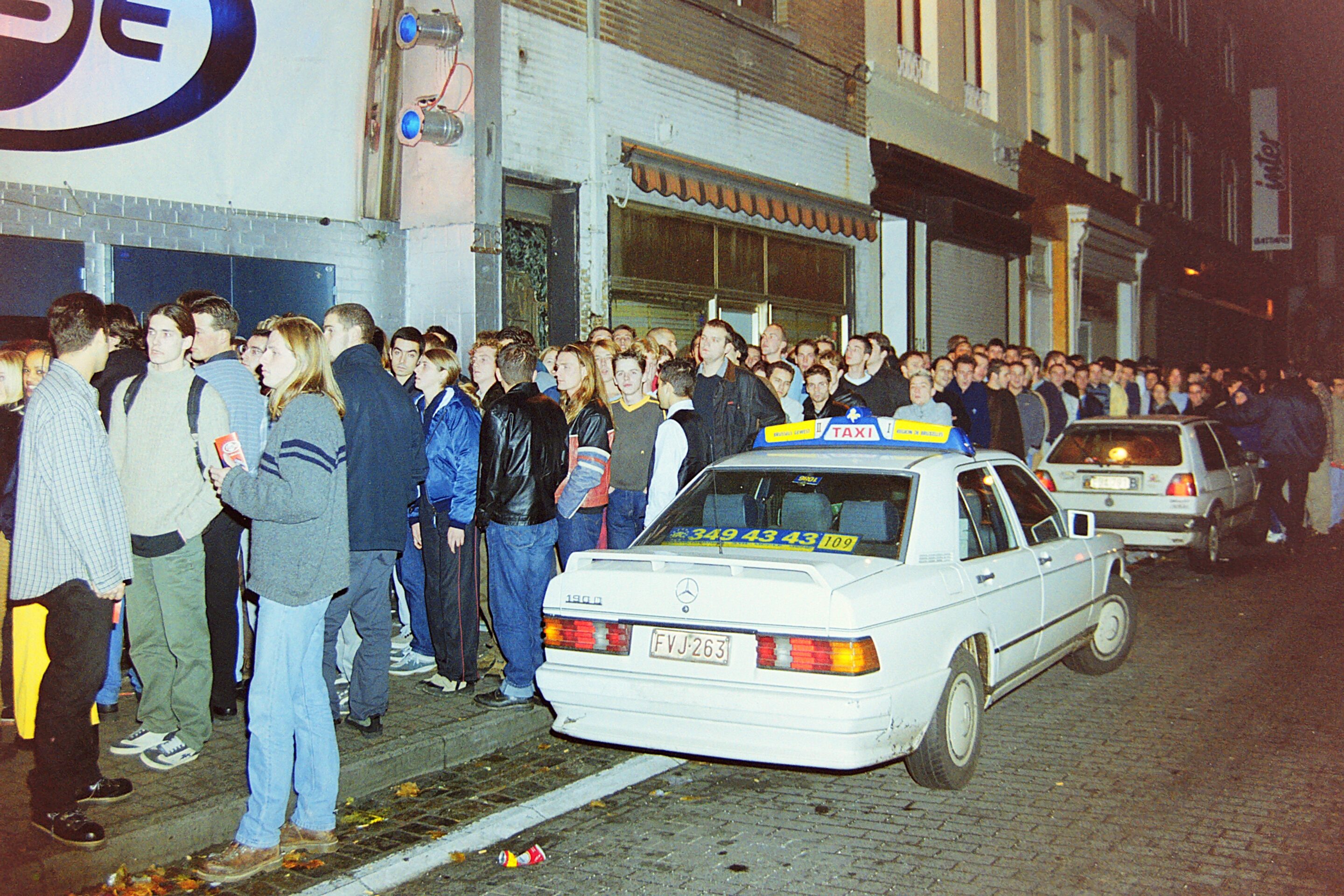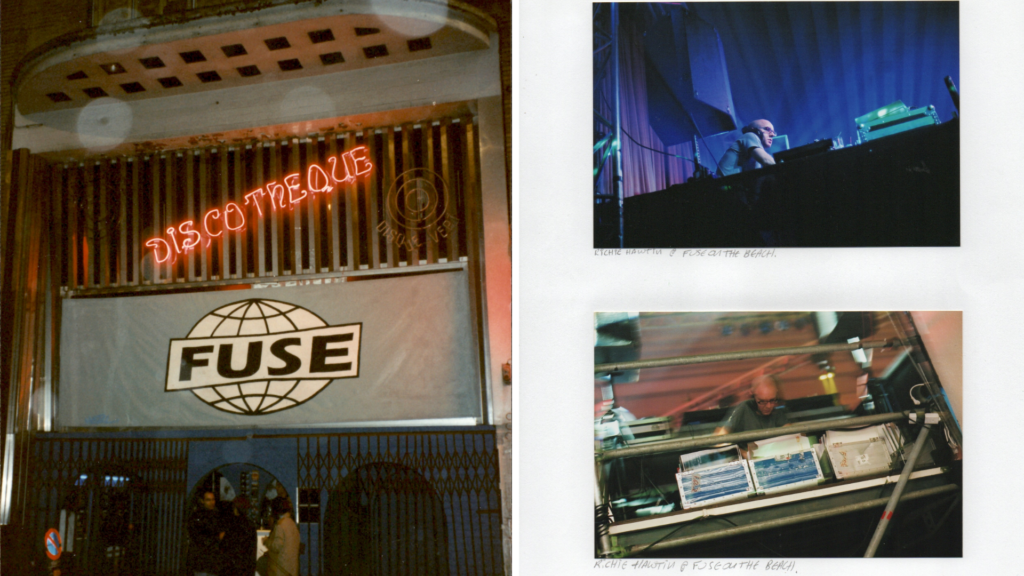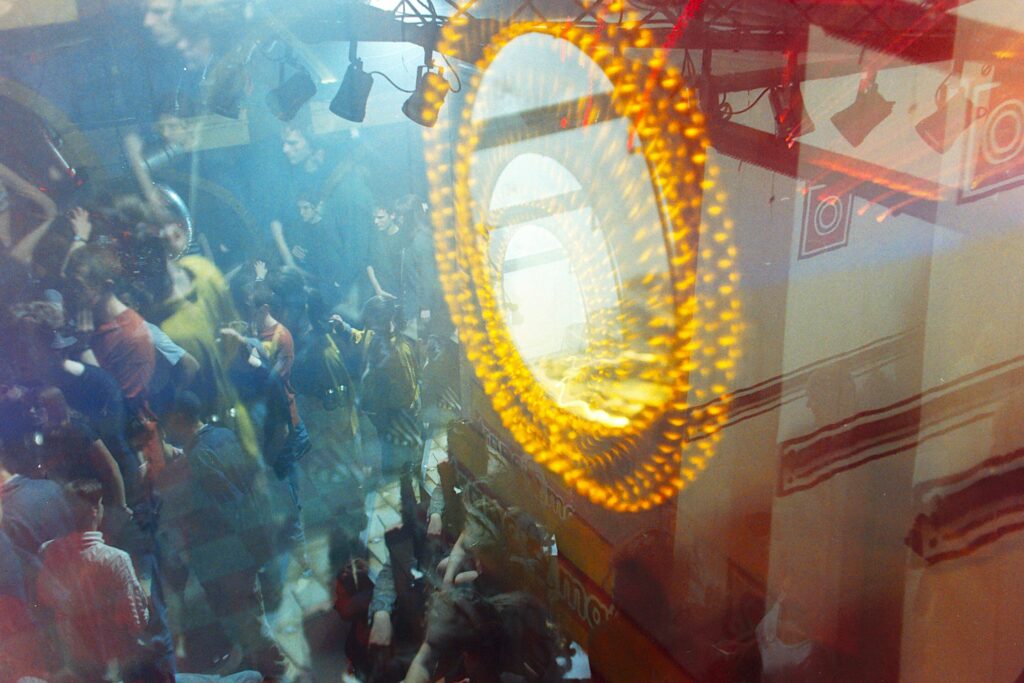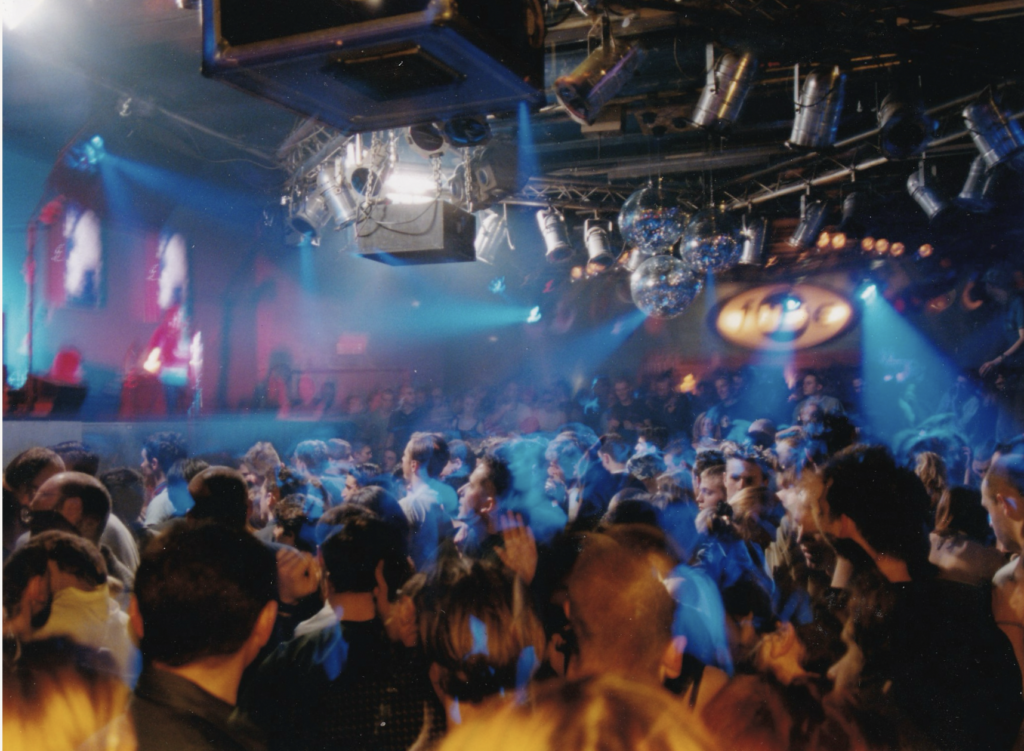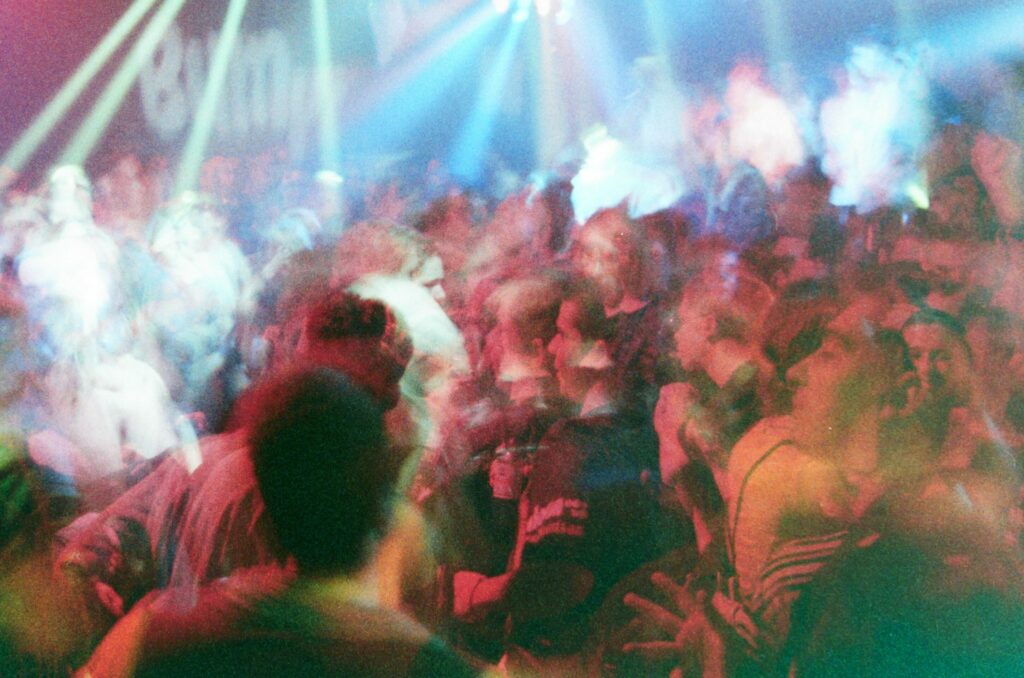"I still feel peaks of dopamine as I climb the stairs of Fuse." Koen Galle, Fuse regular, DJ and author of a new book celebrating the legendary club’s 30 years, sums up the feeling of anticipation on entering the place.
If you haven’t been to Fuse nightclub, you are missing out on a rare treat: a Brussels venue that can hold its head up with the big names of the Berlin, Ibiza and UK clubbing scenes and that has brought joy to hundreds of thousands, if not millions of clubbers since it opened itsdoors in 1994. Fuse is in an unlikely part of Brussels, in the working-class Marolles district and a long way from the bars, bright lights and tourist traps of the city centre.
Once a cinema before becoming a disco and cultural centre for the local emigré Spanish community, Fuse and its rooms are wedged between two ordinary-looking houses in the slightly down-at-heel street. Galle’s book, “Fuse 30 Years of Making Noise”, which came out last December, is a labour of love to a place that is legendary in the European techno scene, if not the world.
“I was flabbergasted when I was asked to write a book about a place with its history and legacy.”He describes the first time he went there in the early 2000s as a techno fan and budding DJ."It blew my mind," he says. Fuse owes its 30-year success to the talent and commitment of two people from the small West Flemish town of Kortrijk: Peter Decuypere, a marketing student, and Thierry Coppens, a law student.
Decuypere, a fan of techno music that was making its way from Detroit to Belgium via import record shops, and Coppens had been running a gay night called“LeDélire” at the Fifty Five club in Kuurne, a small town on the outskirts of Kortrijk. Fifty Five became the target of police raids and was ordered to shut in 1992 on grounds of “lewdness”.
Decupyere and Coppens tried again staging “Le Délire” at a number of other places but ran up against the same opposition from the local authorities. In the meantime, Coppens had started hosting a famous gay night “La Demence” at “le Disco Rouge”(previously el Disco Rojo), the site of present-day Fuse.
Decuypere, who was looking for a new venue, came to check out the place in 1992. He told Galle: “When Thierry turned on the light in the main room, it was if I was seeing the light...I could already see people dancing and cheering to the music. I remember The world is waiting for a techno club. It will happen here.’”
Techno emerged in the US in the mid-1980s as an up-tempo dance music around the same time as house music. Both styles are inspired by European electronic artists such as Kraftwerk and Gary Numan and rely on electronic instruments such as Roland’s 808 drum machine that were just coming onto the market at affordable prices. Techno, which is associated with the Detroit scene, is more electronic than house and often dispenses with vocals altogether or uses robotised voices. House originates from Chicago (being named after the Warehouse club) and is more soulful, often featuring gospel-style vocals.
Techno found a receptive audience in Belgium because it matched well with homegrown genres like New Beat (which involved playing well-known records at slower tempos) and the Electronic Body Music (EBM) of groups like Front 242, with their use of drum machines and repetitive driving basslines. Decuypere says what he wanted to create a place for techno that was what “AncienneBelgique” (the concert venue in the centre of the city) was for live music, i.e. a place with a reputation beyond Belgium that musicians would want to play.
Although the venue on rue Blaes had been used for playing music before (and had even hosted UK electropop band Depeche Mode in 1981) it was far from the glitzy city-nightclubs.“The place has the same floor tiles you find in many Brussels apartments,” Galle explains. Celebrated UK techno DJ Dave Clarke, a regular guest at the club, remembers that the dance floor was always sticky because of the drinks spilt on it.“If you wear the wrong shoes, your feet are constantly sticking. It’s like doing an insane workout with friction control on something really hard,” Galle quotes him in the book.
Far from tapping into the growing popularity of techno, the first few months of the new club were not easy, Decuypere explains.“The first three months were a disaster,” he says. They lost two to three thousand euro a week/month. But he adds: “I believed in the potential of techno.” Over time, the club’s reputation grew and from around 1997 onwards the club, with a total capacity of around 1,500, was full every weekend with lines of people queuing to get in.
Over three decades, Fuse hosted many of the techno scene’s biggest names and played a role in launching some of the biggest names in techno, including Belgium’s own Charlotte deWitte and Amelie Lens, who both played their first sets there. French superstar DJ Laurent Garnier played at Fuse for the first time in 1994 and played the club regularly over the next 15 years. Garnier’s intimate relationship with the club came despite an early falling out with Decuyere after he told the Frenchman he would“never make it in Belgium”.
French electronic music megastars Daft Punk played there in 1995 without their trademark robot helmets. Detroit techno originators such as Jeff Mills as well as second-wave heroes such as Carl Craig, played there frequently between 1994 and 2010. Canadian Ritchie Hawtin was a firm Fuse favourite. The club was even named after one of his pseudonyms.
“The club was the perfect size, big enough to unite and obtain an explosive energy, but still intimate for the DJ and very close to the people,” he told Galle.
Making a mark
For Hawtin, clubs like Fuse and others in Belgium put the country firmly on techno’s map.“If you took Belgium out of the equation in the early nineties, there would be no Europeantechno scene”, he continues.
Fuse even hosted artists outside the techno scene, such as electronic music maverick Aphex Twin in 1995. Decuypere remembers that the first two tracks of Aphex Twin’s set were completely undanceable, and many people left the floor for the upstairs room.“We never booked him again,” Decuypere says. Icelandic musician Björk played a set there in 1997 from her “Homogenic” album.
But successful clubs are less about the big names that play there and more about creating a sense of community for like-minded people where they can feel safe and share the highs of music and dancing.“Going to Fuse was like coming home”, Galle says.
Fuse made its reputation as a techno club because that was the music played in its mainroom. But it has always offered a range of musical styles in its other, smaller rooms. The upstairs room has featured nights playing house, trance, dub, trip hop and other genres and sub-genres. At one point, the club even used the slogan “Fuck the Techno Purists” on its flyers in a clear message from Decuypere to the musically dogmatic.
Adapting to changing musical tastes has been an important part of Fuse’s success. There are remarkably few places that are regarded as so important to the history of techno and remain essential fixtures on the current scene. Fuse, now into its 31st year, has been open at the same premises for longer than Berlin’s legendary clubs like Berghain and Tresor. Berghain opened in 2004, ten years after Fuse opened its doors for the first time. Tresor started in 1991 but moved to a new location in 2007 after closing for two years.
As a club smack bang in the middle of a residential area, Fuse has always had to deal with neighbours. In the early days, the club had to overcome opposition from the city authorities. The first time the club was forced to close (leaving aside the COVID period) because of residents’ complaints came in 2023 after the end of the lockdowns.
It was only thanks to the support of local politicians like Brussels’ current mayor Philippe Close and Ecolo alderwoman Delphine Houba that Fuse was able to reopen. The politicians took the view that the club was an important part of Brussels' cultural offering and an essential place if Brussels was to be a truly cosmopolitan city. It was also helped by the fact that Close had been a fan of techno and dance music while Houba had partied there as a student.
The long-term future of Fuse remains uncertain even if the club is open for now. The Marolles area is starting to be gentrified and the new residents tend to be more sensitive to noise and clubgoers than the older community.
As Galle puts it, in launching Fuse, the founders put in place the foundations for a club in which “new generations have been able to find a home” for their love of music and dance. Rave on.
Malte Helligsøe, EU affairs consultant
It's big and run professionally so things work and the sound is good, but it still manages to feel relevant. Often you get one or the other. What I knew of it was that it was old and had done techno the whole time. That's already extremely rare – I can't think of another techno club that's been as long anywhere (Tresor I guess but not the original location). It's also amazing that it was the first techno place in Brussels and that it's kept going.
Which places carry on the legacy and spirit of Fuse?
C12 of course, for harder, more underground acts than Fuse. Also, Horst Club in Vilvoorde is between a club and a festival but very well done.
Nick Blow, DJ and EU affairs consultant
Musically it was often too hard or techno for my more soulie tastes. I used to go on Sundays to La Demence and other nights that were morehouse. I always preferred the first floor, musically. It’s iconic, up there with the Berlin clubs in techno history. More than ever the world needs clubs like the Fuse. Not taken over by the mainstream.
Where the focus is music and community. Not posing for TikTok and a bland world decided by algorithms. Society needs alternative cultures and the underground more than ever.
Sarah Collins, journalist
I love its muggy, dank dance floors, which feel so much bigger than the space actually is. I would like to think Fuse is still a major club, though I don’t think it’s as well known outside of Belgium anymore, except by the gay community. La Demence is an epic party. I know people (even former prime ministers) who travel far and wide to go.
I think Fuse was a major and influential club, and its legacy can still be felt, certainly in my heart. I met one of my boyfriends on the dance floor there more than 10 years ago, and although we’re not together anymore, I have a real fondness for that time in my life. It reminds me of being young, in love and full of fun. Other places in Brussels don’t compare, but C12 is probably the closest.
